Virtual Home Tour Cambodia and Vietnam Part 1 - Cambodia's present and future in comparison with Vietnam.
- Release date: Feb 02, 2024
- 3662 Views
- Usage and altitude
- Consumer Electronics
- Furniture and home furnishings
- MakeUp
- Vietnam
- Personal Care
- Cambodia
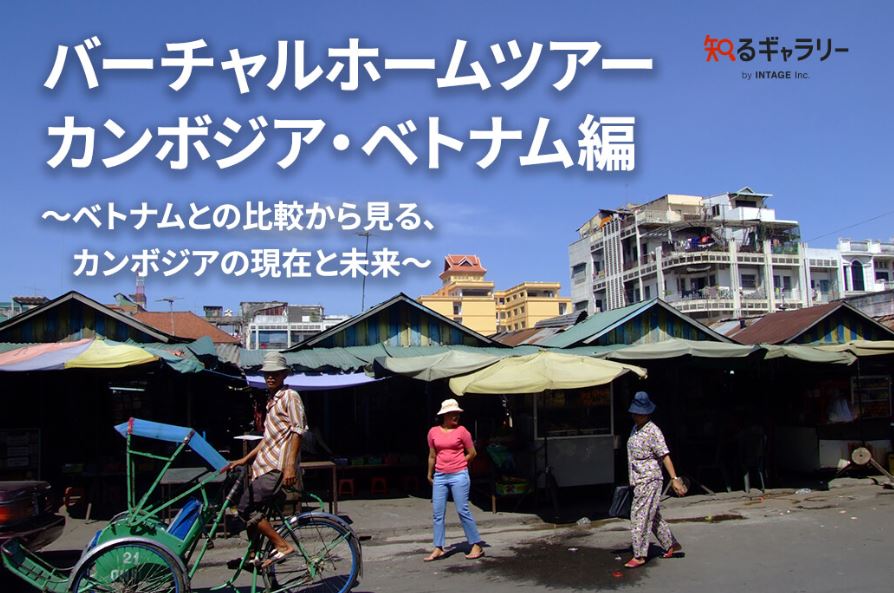
Cambodia is located in the southern part of the Indochina Peninsula in South-East Asia. Although currently classified as a Lower-middle income country, its GDP growth has been significant and the government has set a target of becoming an Upper-middle income country by 2030. As this is at the same level as Vietnam, also in South-East Asia, it may be useful to know what Vietnam is doing now in order to predict what Cambodia will be like seven years from now.
This article therefore explores signs of Cambodia's future by looking at the living conditions in Vietnam and Cambodia with comparisons, using the Consumer Life Panorama database of sei-katsu-sha provided by Intage.
*This article is a restructured version of a seminar held on 14 December 2023.
This article is the first part. Click here to read the second part.
https://www.global-market-surfer.com/pickup/detail/455/
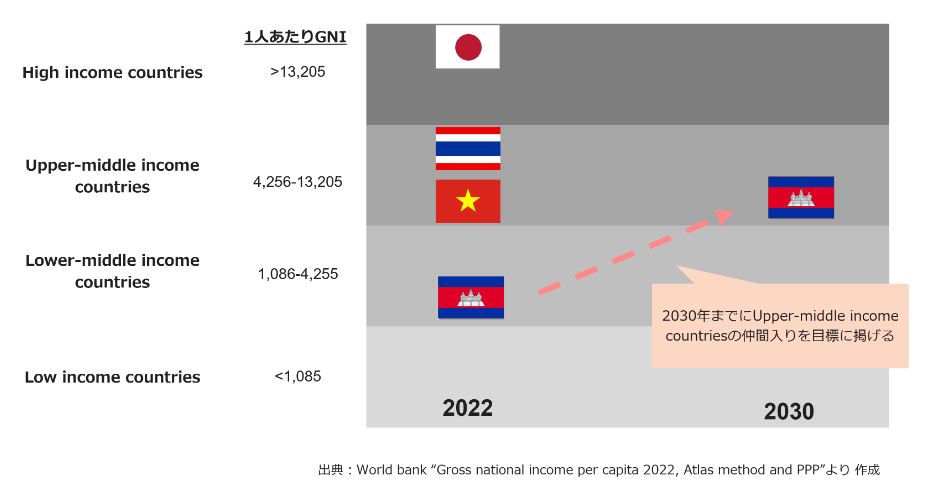
Vietnam and Cambodia Overview.
Let's start with an overview of both Vietnam and Cambodia based on statistical data.
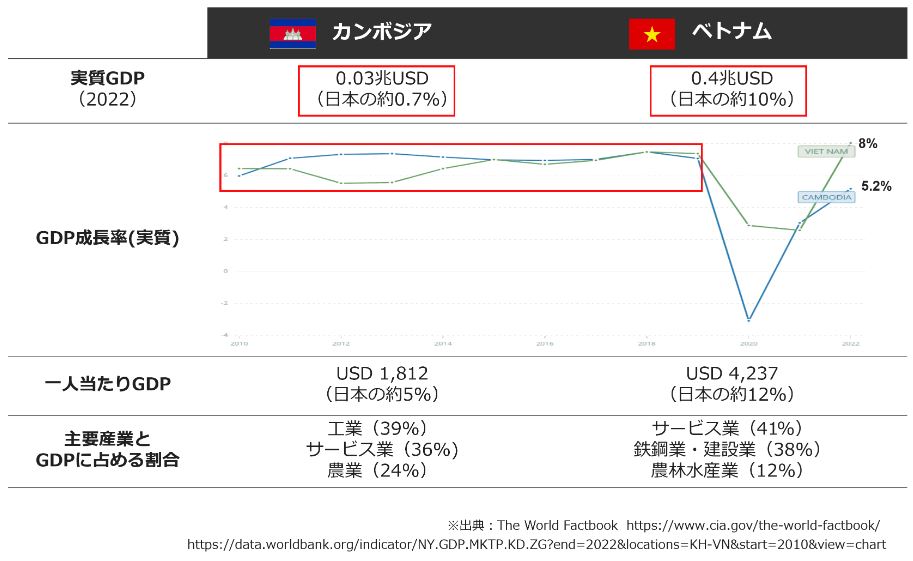
The Socialist Republic of Vietnam (Viet Nam) has a population of 99.46 million (0.79 times that of Japan), while the Kingdom of Cambodia (Cambodia) has a smaller population than Viet Nam, with 15.55 million (0.12 times that of Japan). The population growth rates are 0.87% and 1.16% per year respectively, and both populations continue to increase.
The average age of the population is 31.9 years in Vietnam and 26.4 years in Cambodia, which, together with population growth, is expected to grow in the future. In terms of the economy, Vietnam's GDP is 10% of Japan's, while Cambodia's is 0.7%. However, before the new coronavirus epidemic, the economy was growing at 6-7% per year and is now returning to its previous momentum after the coronavirus disaster.
Let's now look at the differences between housing in Vietnam and Cambodia using the Virtual Home Tour feature of the Consumer Life Panorama.
First, we look at housing in Ho Chi Minh City, Vietnam, where the economy is said to be a few years ahead of Cambodia's.
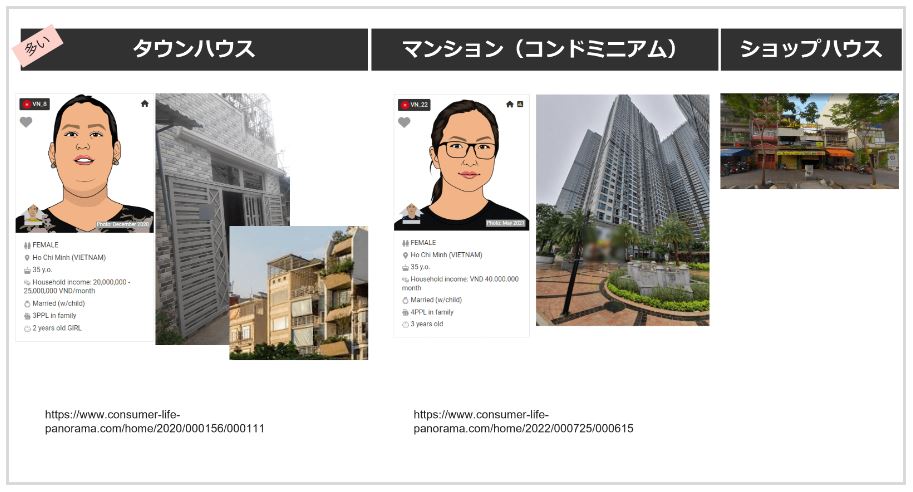
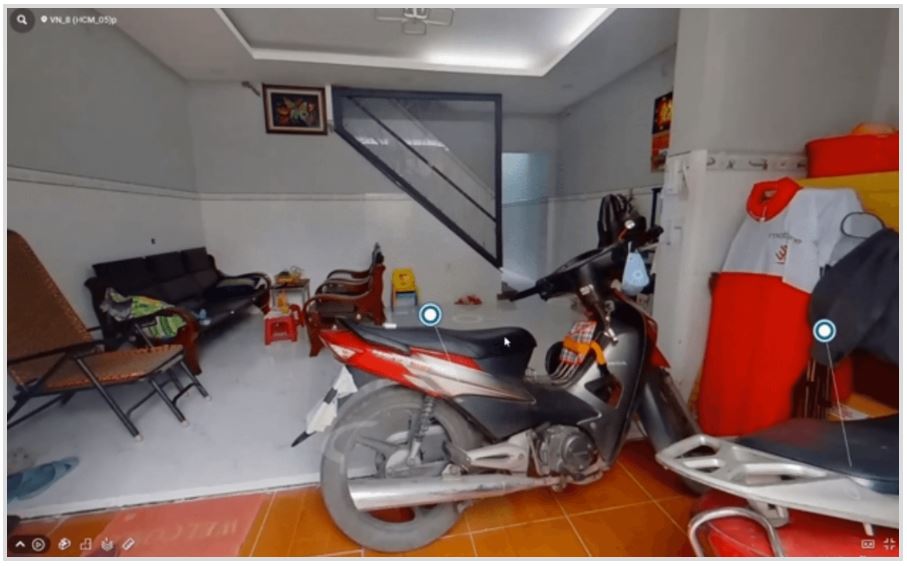
In Vietnamese houses, the living room is located as soon as you enter the front door. The front of the house is used as a place to welcome guests and chat, as it is considered the face of the whole house. A separate room is used for the family to watch TV and enjoy a happy time or for the children to play. There is no air conditioning in this living room and the door is usually opened for ventilation.
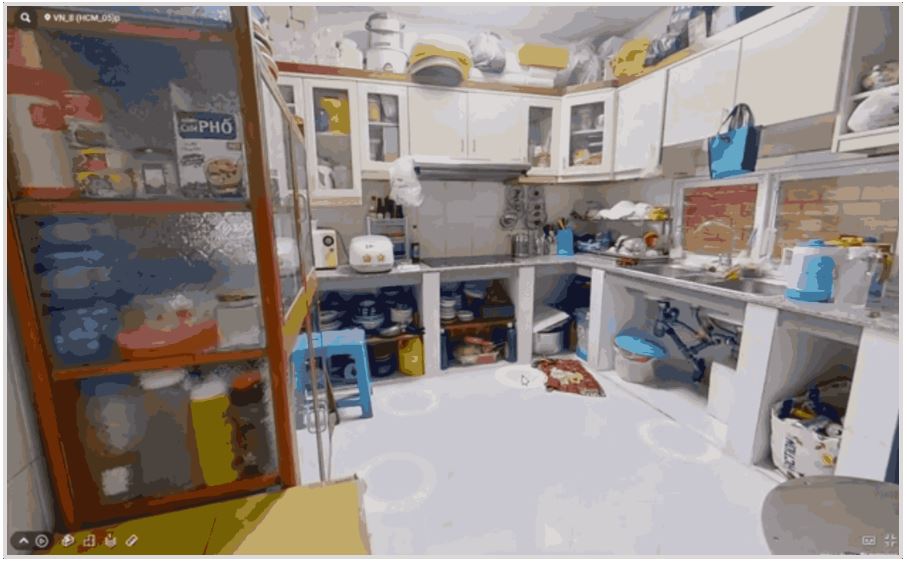
The kitchen is considered a place where people do not want to be seen by others because it is easily cluttered and is located at the back of the house. Many things tend to overflow due to the national tendency not to throw things away easily unless they break. Kitchens include fridges and microwaves, and more and more households are installing induction due to its safety features.
The family bedroom is located on the second floor.
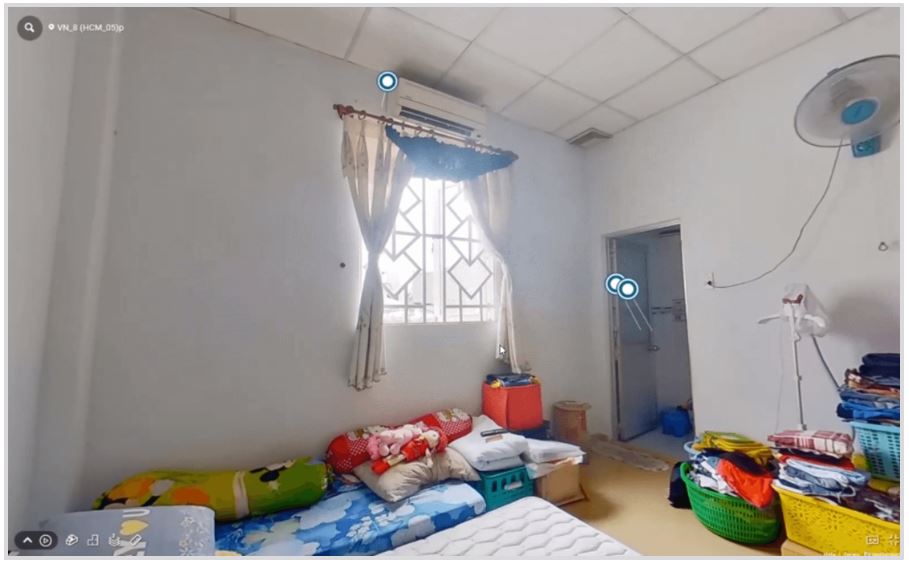
The only air conditioner in the house is installed. It is common in Vietnam to install air conditioning only in bedrooms to save energy.
Next is the condominium.
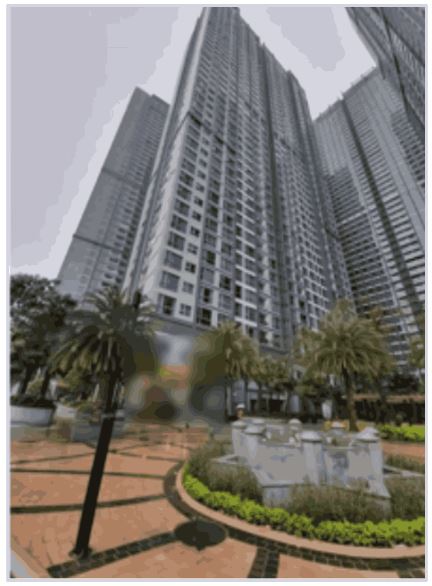
Household monthly income of approx. 240,000 yen, also class A, family of four, living in an 88 m2 room.
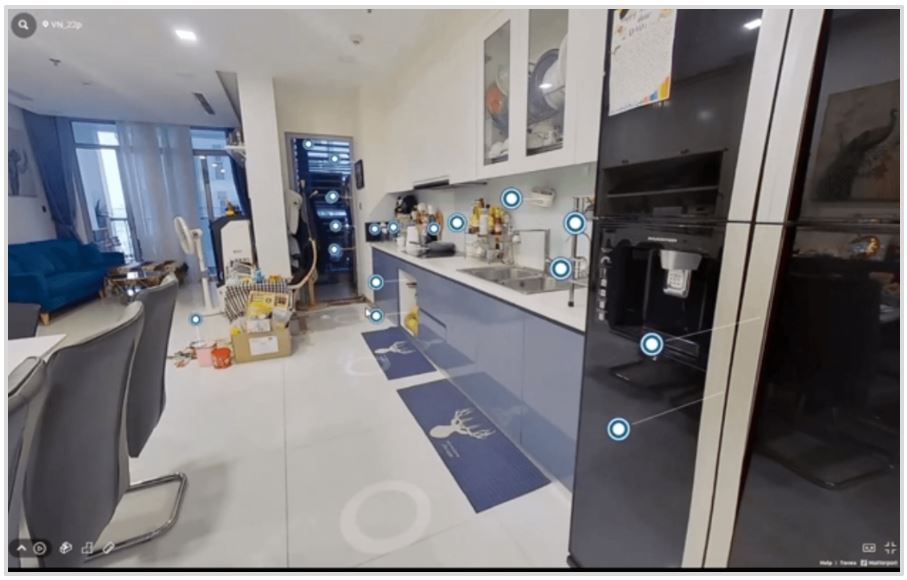
The construction of a townhouse is very different from a townhouse, and some dwellings nowadays have the kitchen first at the front door, as in this house. Food is often bought in bulk at supermarkets rather than wet markets (fresh food markets), so food is packed in large fridges.
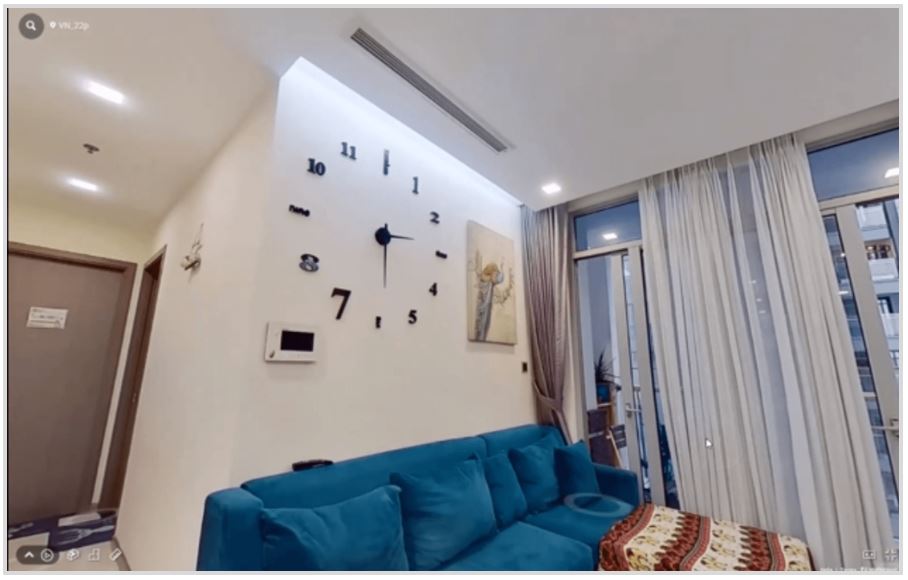
The living room ceiling is fitted with a system air conditioner, but it is used infrequently, usually with a fan and a cooler fan that generates cool air.
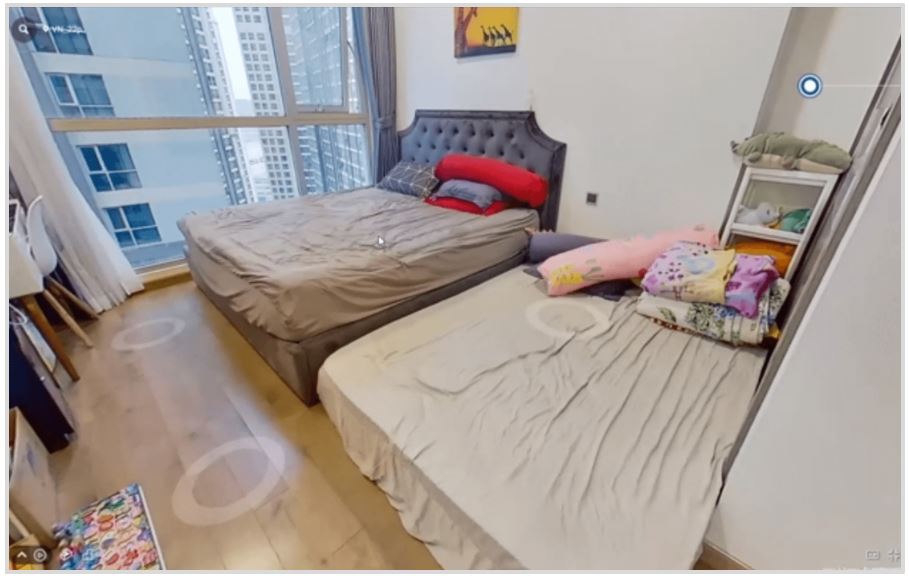
Air conditioning is also installed in the master bedroom, and all family members sleep in the same room to reduce the amount of electricity used when air conditioning is used.
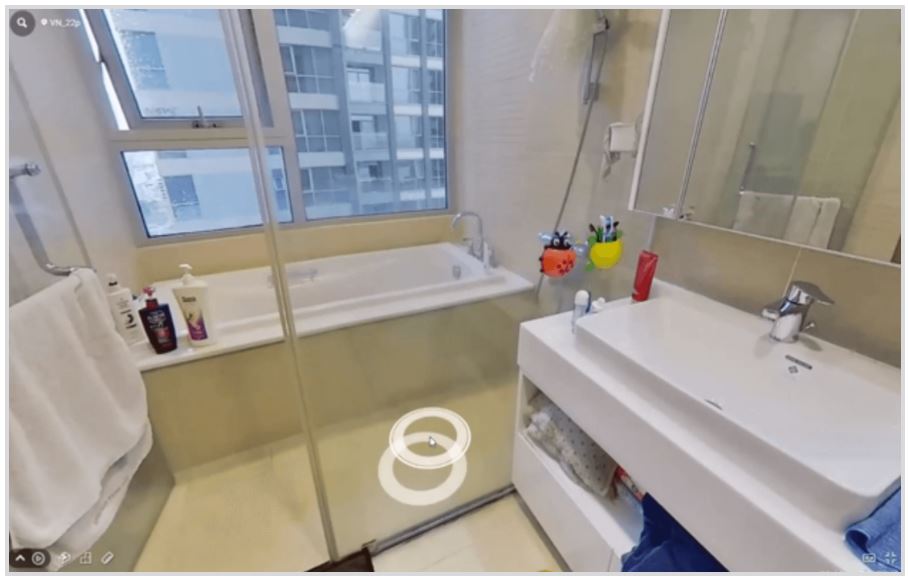
There is a large bathroom and toilet at the back of the bedroom. The house had another compact bathroom.
Virtual tour of Cambodian dwellings
Next, let's look at housing in Cambodia.
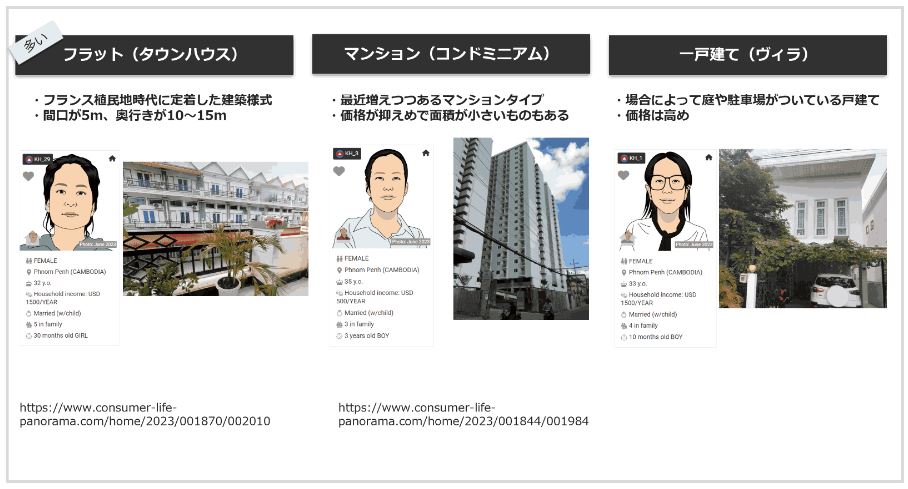
The three main types of housing in urban Cambodia are listed above. As in Vietnam, the most common housing type is the townhouse, known as a flat. Condominiums have also been on the increase recently, and there are a certain number of detached houses in other urban areas. Owning a house is an important status in Cambodia and there is a value system that encourages people to buy a house, even if it is a little overpriced. In addition to financial institutions, developers also offer mortgages to finance the purchase.
First, we will look at long apartment blocks and flats (townhouses in Vietnamese) at the back. A family of five earning approximately JPY 220,000 in Cambodia with a median income of approximately JPY 90,000 live in a 202 m2 dwelling purchased in 2018 for approximately JPY 11,800,000.
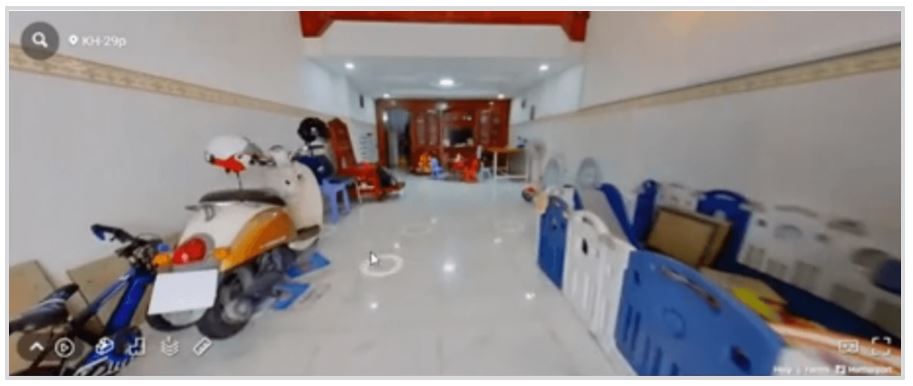
When you enter the house, you first see the living room. In front of the living room, bikes are placed indoors to prevent theft. The household also had a children's play area (right in the image) in the living room.
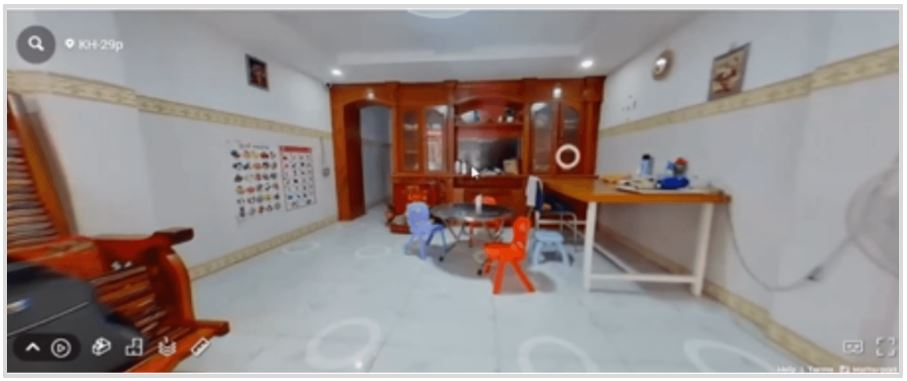
There is a simple, simple table set at the back of the living room, where people eat meals or invite acquaintances. Wooden furniture and a Buddhist altar are also common features of Cambodian houses.
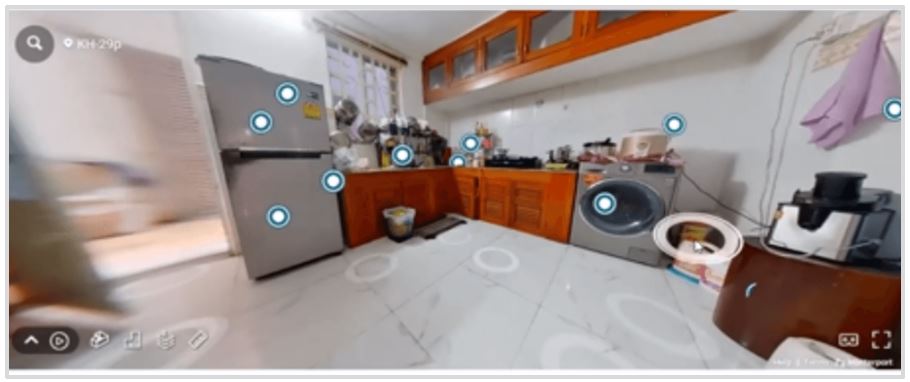
Go to the back and you will find the kitchen. Unlike in Vietnam, there is a sense that the kitchen is a space where people can see you, so it is considered the second most expensive place to spend money on, after the living room, in case of renovations.
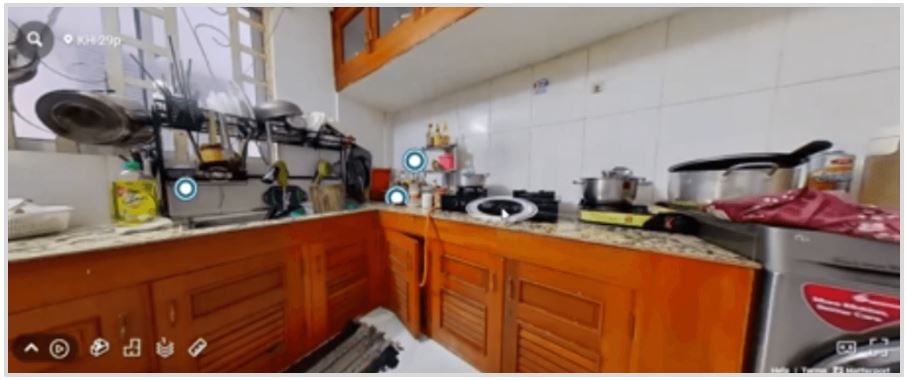
Cooking is carried out using a stationary stove with a gas cylinder or a one-burner cassette stove. Unlike in Vietnam, there is little sense of buying in bulk, so there are few ingredients in the fridge and fresh produce is purchased from the neighbourhood wet market on a case-by-case basis.
The household has a water server due to their higher income, but no microwave oven.
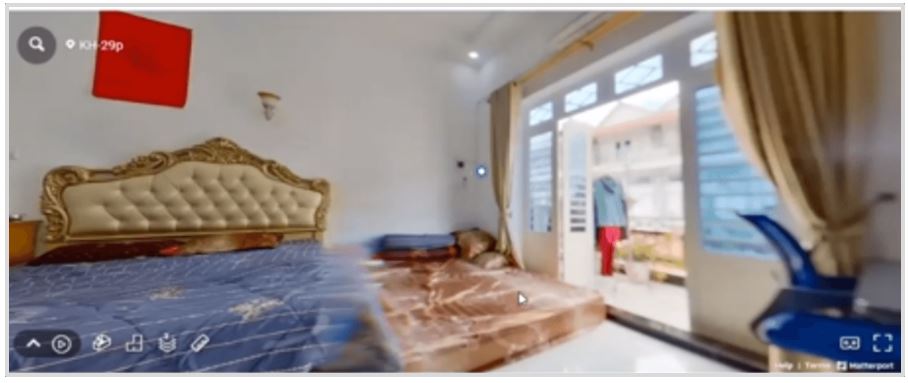
The beds of the parents and the children are placed side by side in the master bedroom. As in Vietnam, the air conditioning is switched on at night, so sleeping in the same room reduces electricity consumption.
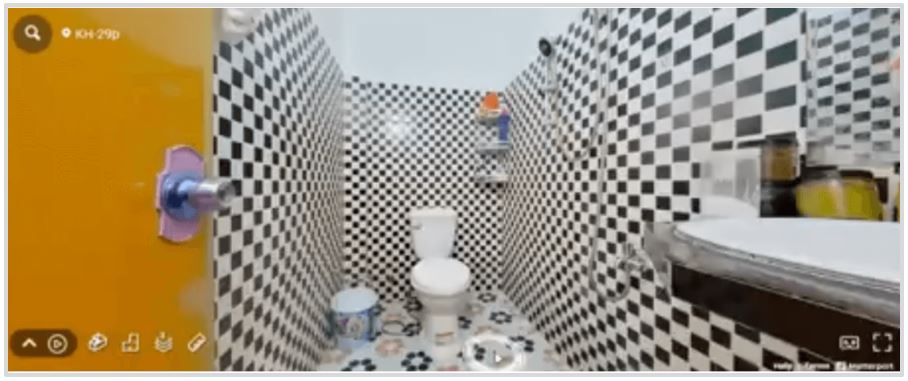
Bathrooms are located in each bedroom and generally do not have a bathtub. Shampoo and body soap are generally shared by all family members.
Next, condominiums are introduced. A family of three has a monthly income of approximately 70,000 yen, which is slightly lower than the middle class. In Cambodia it is common for people to buy a house even if their income is not high, and they buy and live in a compact 21 m2 condo.
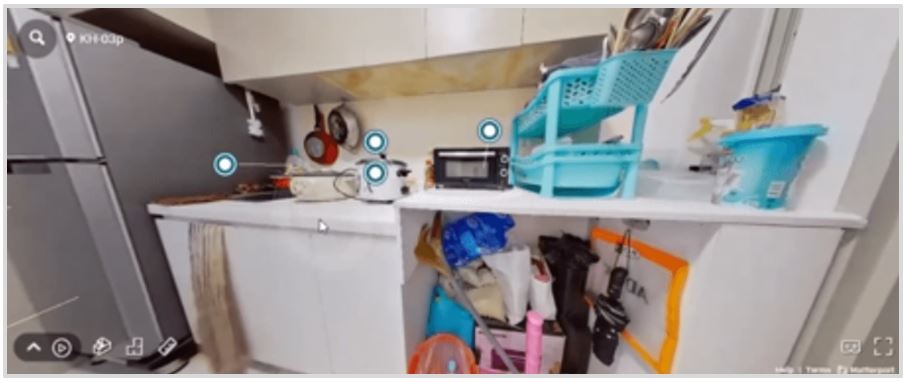
The kitchen is located immediately after the entrance. This home has a microwave oven, but due to limited space, a cassette stove is taken out of storage for cooking.
The family only spends time in this one room, which is usually used as a living/dining room and is used as a bedroom with a futon laid out at night. Laundry is washed by hand and hung out on the balcony as there is no space for a washing machine.
Air conditioning is a must regardless of income and is used in combination with a fan with a timer set at bedtime.
Finally, there is a detached house.
A family of four with a monthly income of approximately JPY 220,000 lives in a 163 m2 house with a parking space, purchased in 2017 for approximately JPY 11,8 million. Note that in Cambodia, it is not necessarily the case that people are rich because they live in a detached house, but that families who can afford the assets choose to live in flats (townhouses).
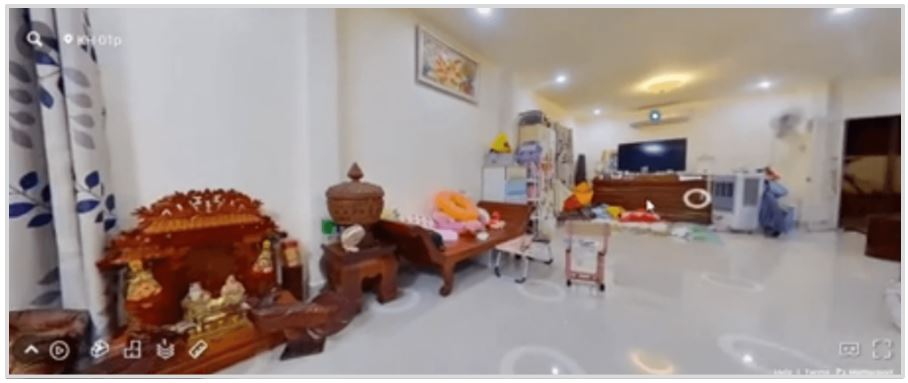
As in the rest of the house, there is a living room beyond the entrance to welcome visitors. The house has a parking space, so bikes are parked in the car park alongside the car.
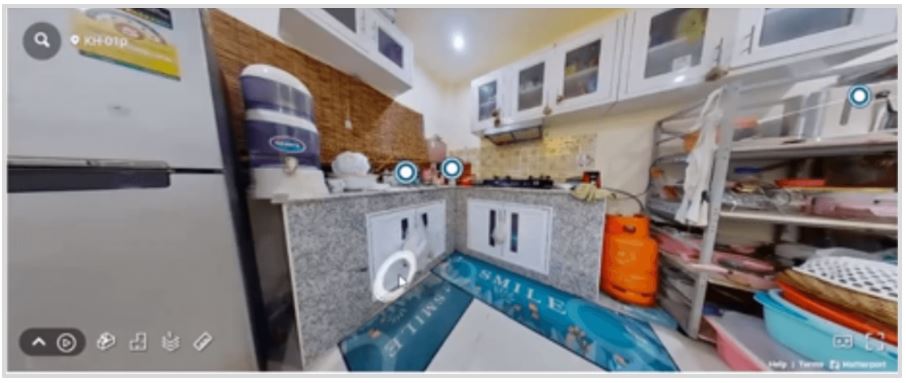
The kitchen has been consciously arranged with design-oriented storage doors and tiled wallpaper. We use a two-burner stove for cooking and the orange one is a gas cylinder. We don't stock much food in the fridge and visit the wet market three times a week to procure it. Seasonings and detergents that can be stored are purchased from supermarkets.
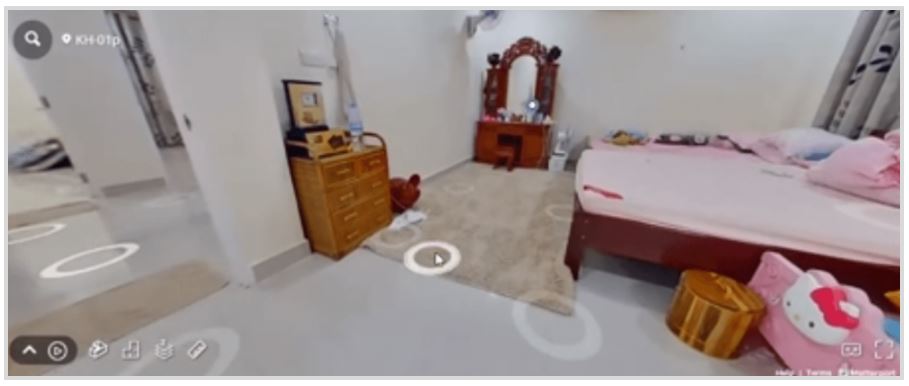
On the second floor there are several bedrooms and a bathroom. The toilets and showers were partitioned off.
Overall, the houses in Cambodia are larger, whereas those in Vietnam seem smaller. However, there tends to be more things to have and put in the house in Vietnam, and this is expected to be the case in Cambodia in the future.
Differences in "personal belongings" between Vietnam and Cambodia
So what are the differences in what is currently in the home? Let's compare the possessions of Vietnamese and Cambodian households. By looking at the current situation in Vietnam, it should be possible to predict which items will become popular in Cambodia in the near future.
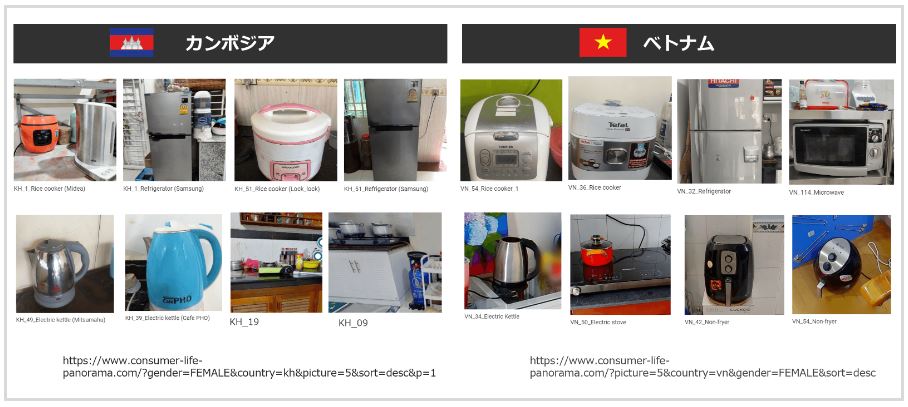
Cambodian households generally cook on cassette stoves or stationary stoves. Rice cookers, electric kettles and refrigerators are widespread, while microwave ovens, ovens and toasters are less common.
In Vietnam, where city gas is not widely available, in addition to microwave ovens, induction hobs and non-fryers are also found to some extent. As city gas is also not available in Phnom Penh, Cambodia, induction hobs may take root in the future.
In Cambodia, many brands are global brands, while in Vietnam, global brands including Japanese brands tend to be common.
In Cambodia, people generally use brooms, brushes and mops rather than vacuum cleaners. In Vietnam, on the other hand, not only vacuum cleaners but also robot vacuum cleaners have started to spread. Another characteristic of Vietnamese people is the use of different detergents for different purposes.
<Make-up and skincare products>
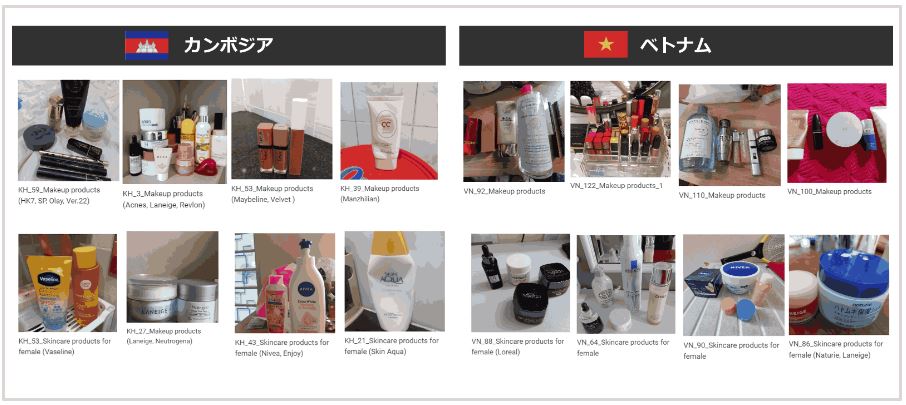
In Cambodia, people tend to use only the minimum necessary items. Many use moisturising lotions with UV protection due to the need for sun protection and white skin. In addition to European, US and Japanese brands, Korean brand products are also seen.
Meanwhile, Vietnam uses more items than Cambodia, and the concept of using a proper cleanser to remove make-up has taken root. In addition to moisturising items, beauty products are also supported, and high value-added brands such as items for sensitive skin and derma-based cosmetics based on dermatological science are attracting attention.
summary
Today, Cambodia has yet to reach a more affluent standard of living than Vietnam. However, with approximately 70% of women already participating in society, there will be an increasing need for more efficient household management. In addition, given the high economic growth rate and geographical and cultural proximity, Cambodia's consumer market size is likely to at least catch up with that of Vietnam today.
If you would like to learn more about Cambodian consumers in more detail, please also read Global Market Surfer's articles on 'Daily Routine', 'Eating', 'Cleaning', 'Getting Around' and more.
>> https://www.global-market-surfer.com/pickup/detail/455/
Intage offers a range of support to help you understand the values and lifestyles of people living in different countries, such as Cambodia and Vietnam. If you would like to try out the Virtual Home Visit functionality described in the article, please request a trial below.
https://form.k3r.jp/intage/clpcontact
What is Consumer Life Panorama...
This is a website-based database provided by Intage to deepen understanding of the real living conditions of overseas consumers, including their living space, digital life and mobility life.
The database provides access to information on living environments, daily routines, digital lifestyles, etc., and can be used for marketing and product development tailored to various targets by reading the actual real-life behaviour of overseas consumers.
Introductory video:https://www.consumer-life-panorama.com/demo/guide?l=jp
Demo Site >> http://consumer-life-panorama.com/demo/
Translated by AI translator
-
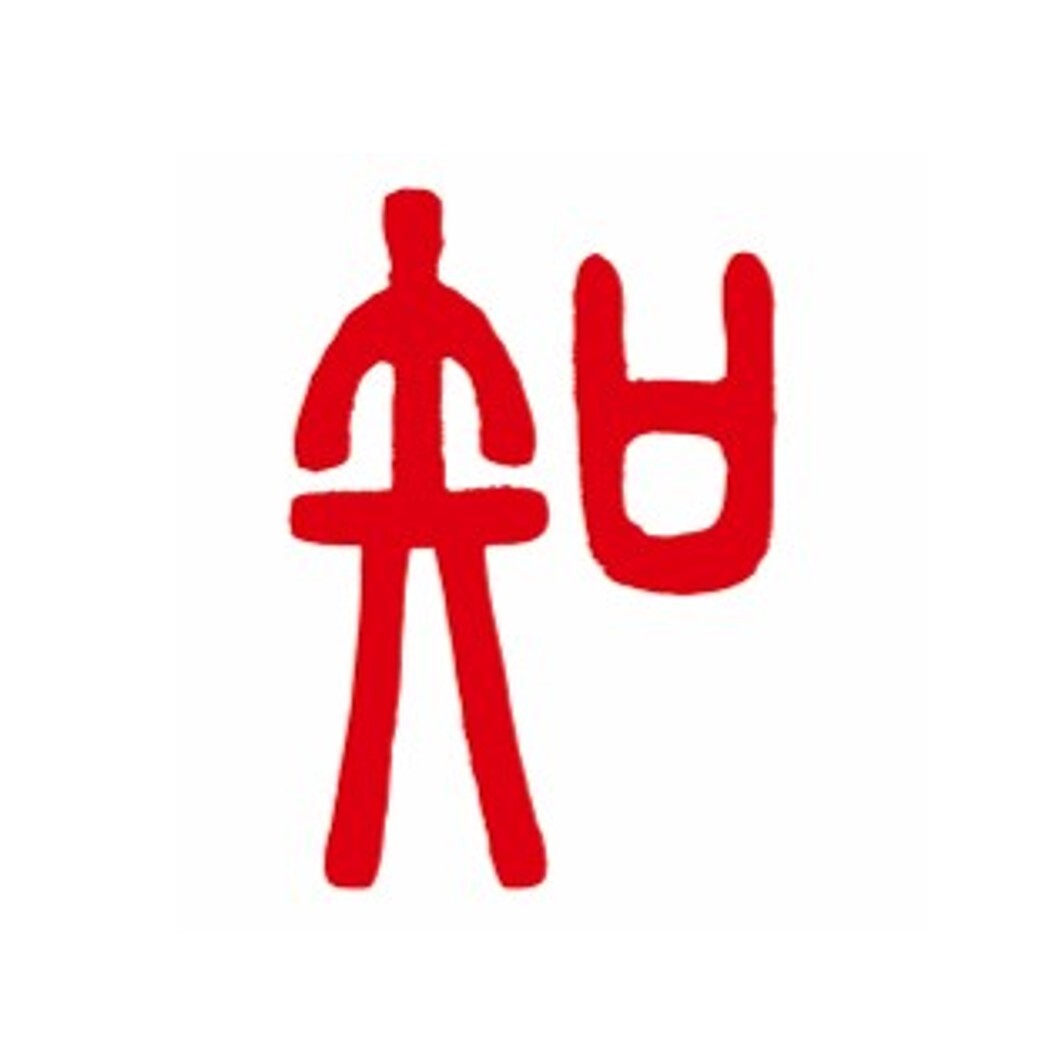
Author profile
Intage Inc.
***
 Global Market Surfer
Global Market Surfer CLP
CLP